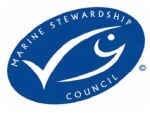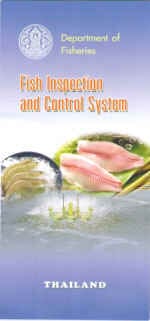With most fish in the past coming from the wild, traceability has been fraught with difficulties.
Traceability is allocated to regions and is used more as a marketing tool rather than a designation of quality and safety. Scottish salmon, North Sea or North Atlantic Cod have been brands instead of assurance symbols.
However, now with burgeoning aquaculture taking a more prominent role in the fish markets of the world, knowing where the fish, shellfish or crustaceans originate is becoming more important.
As news of problems with fish diseases in some fish farms becomes more publicly known, consumers want assurance that the products they are eating are safe.
As more arguments appear in the media about the effect that fish farms and escapes from farms are having on wild fish stocks, the public will soon start to demand more and more knowledge about the welfare conditions of the farms and the manner in which the fish are reared.
All the arguments about welfare, sustainability, environment, health and safety that have been concerning the meat industry for many years are coming more and more to the fore.
Globally, there is no single quality assurance system for fish and shellfish products, and as with the meat and poultry industry, it is likely that it will be left to individual countries and industries to develop their own guarantees and set their own transparent standards with which the consumer can make a considered judgment.
Already some national industry standards and guidelines are appearing, starting the ball rolling.

The Marine Stewardship Council is a global authority that works with its partners to transform the world's seafood markets on a sustainable basis. It has developed standards for sustainable fishing and seafood traceability. It also affirms that MSC-labelled seafood comes from, and can be traced back to, a sustainable fishery.
The MSC meets high benchmarks for credible certification and eco-labelling programmes, including the UN Food and Agriculture Organisation (FAO) guidelines and the ISEAL Code of Good Practice.
However, while the MSC works for and certifies sustainable sea fisheries, its certification process is not traceable and food safety is not assured. The certification is more for environmental and ecological assurance.
From a food safety standpoint, most national authorities set out regulations that will cover the fish and seafood when it enters into a processing plant. As with most food processing establishments, the fish being prepared for the retailer, wholesaler or foodservice outlet will have to be processed under strict safety regulations.
Most of these processing regulations will be laid down under traditional HACCP (Hazard Analysis and Critical Control Point) criteria. Many of the processing practices will be those that have been demanded by the retailer or the foodservice outlet.
The government authorities will also lay down strict food safety criteria for the import of fish and seafood products, but these again do not constitute a full assurance and traceability certification.
However, there are some countries and authorities that are out to start setting full fish and seafood inspection and control procedures that employ traditional traceability measures and audited quality assurance systems.
The ministry of fisheries in Viet Nam has a National Fisheries Quality Assurance and Veterinary Directorate (NAFIQAVED) which oversees the fisheries industry.

Thailand's Department of Fisheries has developed a Fish Inspection and Control System.
The Department of Fisheries says: "In realizing the importance of quality and safety of fish and fisheries products, DOF operates several programs to ensure food safety with the farm-to-table approach.
"All aquaculture farms are required to register with DOF. The control Program has been established with the objectives to ensure that fish and shrimp from approved farms do not contain toxic substances in quantity that are considered harmful to human health and to prevent environmental pollution and maintain the water quality of the production area." The DOF carries out regular farm inspections - checking sanitation, disease control, record-keeping on feeds, drugs and chemicals that have been used, water quality, mud quality, drug residues in fish and shrimp.
The DOF also has the authority to classify the products; the entire processing industry is monitored under the General Principle on Food Hygiene and Good Manufacturing Practices - all under HACCP systems.
The DOF now also has a computerized traceability system for shrimp. The system is open to the shrimp farmer and harvester, processor and feed manufacturer. It allows every step of raising, production and processing of the shrimp to be monitored and recorded.
In the USA, it is the Department of Commerce that has drawn up an inspection programme for the fish industry, rather than the traditional authorities such as the Food Safety and Inspection Service (FSIS) or the Food and Drug Administration (FDA).
The US programme is a voluntary system of inspection and monitoring and offers a service that helps fish producers and processors make sure they comply with applicable food regulations.
The service says its inspectors serve five roles: Sanitation advisor, quality control monitor, observer, communicator and official certifier.
"Products inspected and certified under the USDC Seafood Inspection Program, which meet all specified requirements and criteria can bear one or more official marks or statements associated with the program," the Department of Commerce says.
The marks are: US Grade A, Processed Under Federal Inspection (PUFI), Lot Inspection Mark, Retail Mark and HACCP Mark.
HACCP principles are also employed to certify products.

In Europe, systems such as Label Rouge, which has been used to mark out quality products in the meat and charcuterie industries, is also certifying quality fish and seafood products grown and produced under strict principles and practices.
The Label Rouge officials say: "The Label Rouge implies adherence and strict compliance to the rigorous code of hygiene and safety.
"Every link in the chain in concerned: Total quality control at every stage of the integrated operation."
Label Rouge is an independently certified system approved by the authorities and accredited by COFRAC.
Among the products that have been awarded, Label Rouge certification is Scottish Farmed Salmon produced for the French market.
Other niche market systems, such as organic production, also have strict accreditation guidelines and are monitored by the relevant authorities for the specific niche market.
In Canada, for example, Certified Organic Associations of British Columbia is, at present, calling for comments on establishing specific organic standards for aquaculture. In other countries around the world, some standards have already been established.
However, while this is being done by some countries and organisations around the world, the practice of having fully certified traceability for fish, shellfish and seafood is still in its infancy.
And while aquaculture practitioners and fish farmers set high standards and draw up their own guidelines for the production of safe and wholesome food, more official certification systems are expected to be established around the world.

